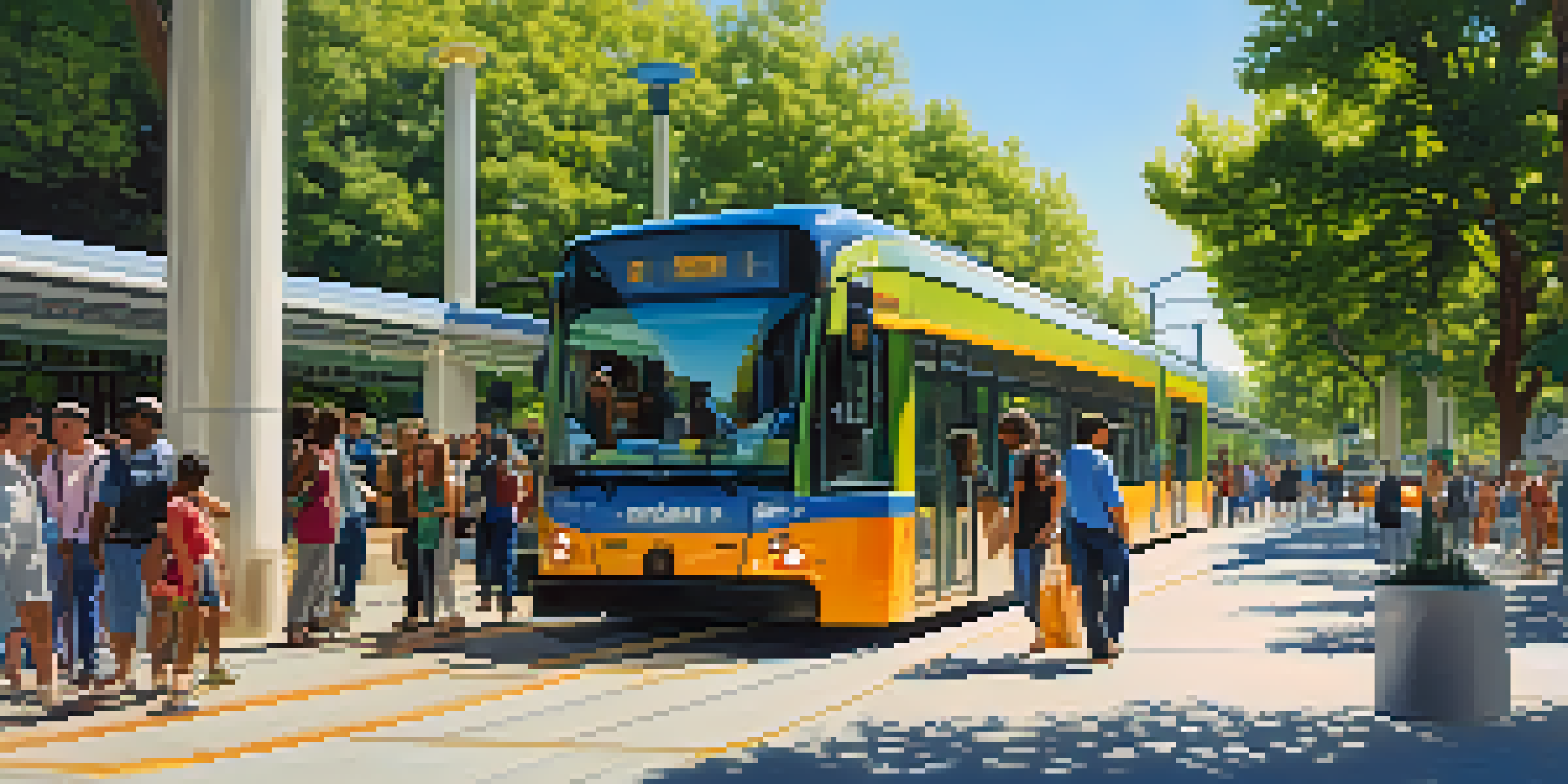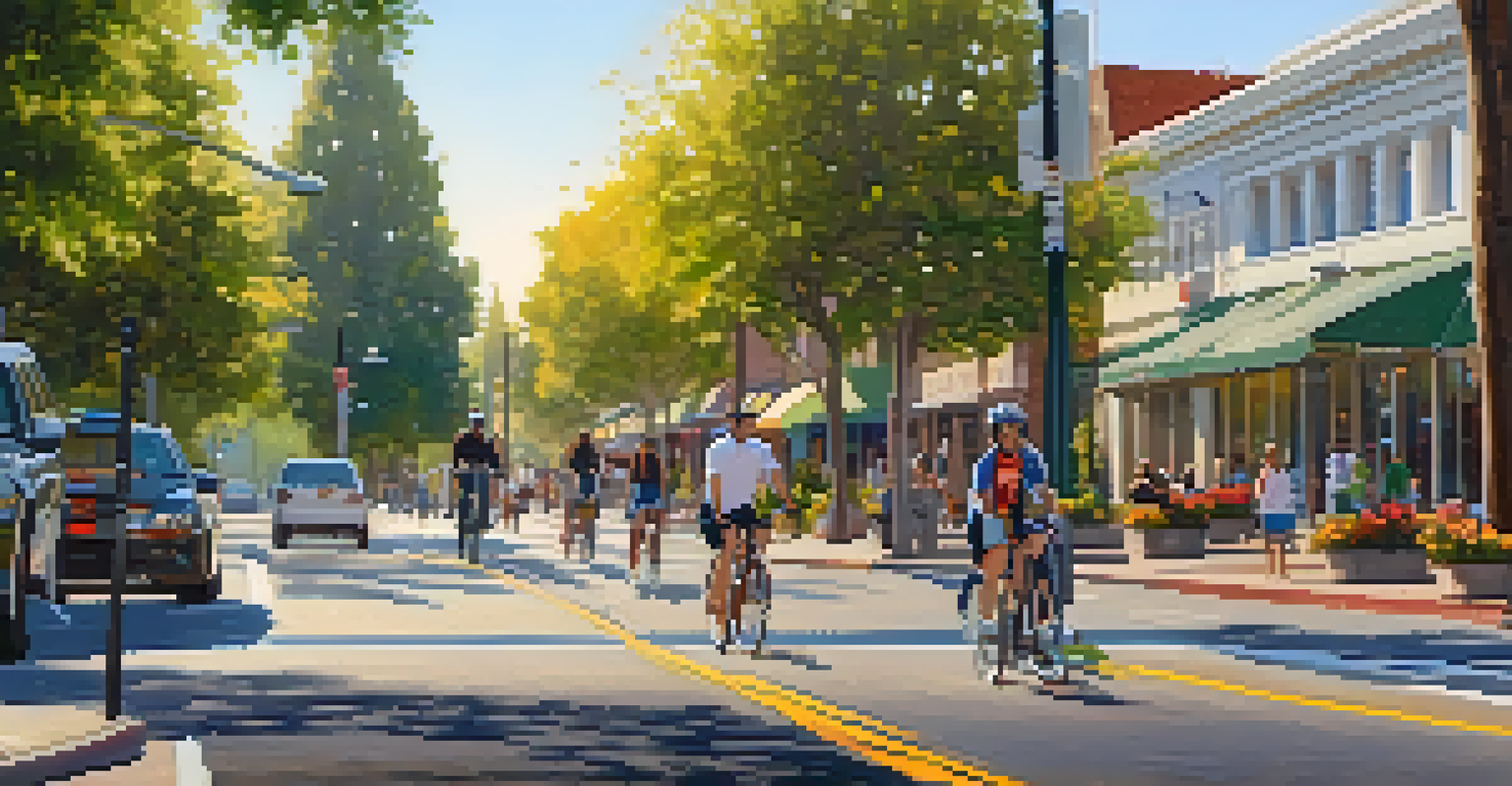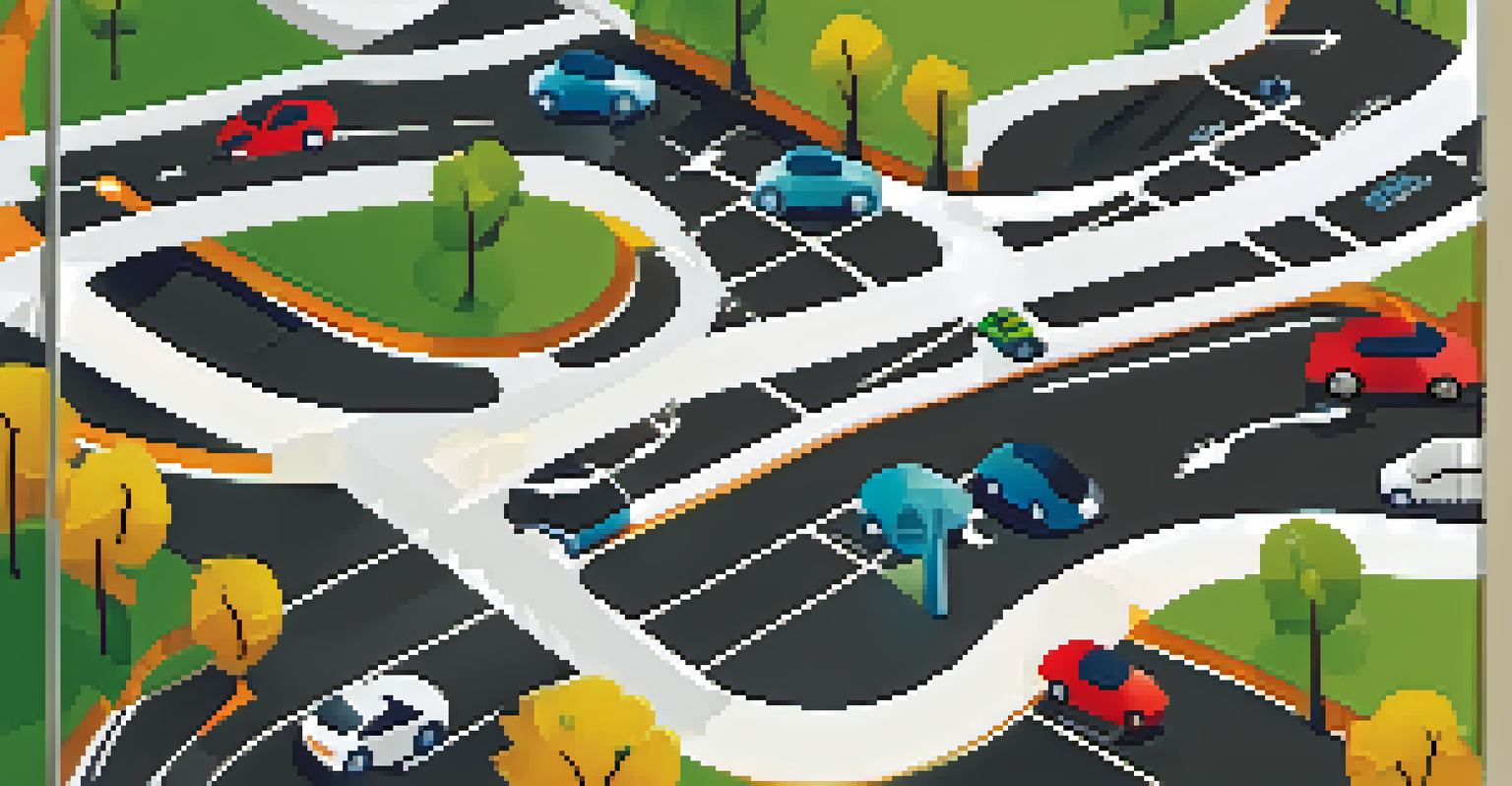Sustainable Transportation Initiatives in Sacramento

Overview of Sacramento's Sustainable Transportation Goals
Sacramento has set ambitious goals to become a leader in sustainable transportation. The city's vision includes reducing greenhouse gas emissions and improving air quality through various eco-friendly initiatives. This commitment is part of a larger effort to create a healthier, more livable urban environment for residents and visitors alike.
Sustainable transportation is about more than just reducing emissions; it's about creating a better quality of life for everyone in our community.
These goals align with California's broader climate action plans, emphasizing the need for cities to adapt their transportation systems to be more sustainable. By prioritizing public transportation, walking, and biking, Sacramento aims to decrease dependency on personal vehicles. This shift not only benefits the environment but also encourages a sense of community and well-being.
To achieve these objectives, the city collaborates with local organizations, government agencies, and community members. This collective approach ensures that the initiatives meet the needs of diverse populations while fostering a culture of sustainability. In the following sections, we'll delve into specific projects and programs that highlight Sacramento's commitment to green transportation.
Investments in Public Transit Systems
One of the cornerstones of Sacramento's sustainable transportation plan is the enhancement of public transit systems. The Sacramento Regional Transit District (SacRT) has been working diligently to improve bus and light rail services, making them more accessible and efficient. Recent investments have focused on upgrading facilities and expanding routes to better serve the community.

These improvements not only aim to increase ridership but also to provide a viable alternative to driving, thereby reducing traffic congestion and emissions. For example, the introduction of electric buses is a significant step toward minimizing the environmental impact of public transport. By investing in cleaner technologies, Sacramento is setting an example for other cities to follow.
Sustainable Transit Investments
Sacramento is enhancing public transit systems to reduce traffic congestion and promote eco-friendly travel alternatives.
Moreover, public transit initiatives are often paired with community outreach efforts to educate residents about the benefits of using these services. Programs that promote transit use, such as discounted fares for students and seniors, help to create a more inclusive environment. This comprehensive approach ensures that public transit becomes a preferred option for many.
Biking and Walking Infrastructure Improvements
Sacramento is also making strides in enhancing biking and walking infrastructure, recognizing the importance of these modes of transport in reducing carbon footprints. The city has implemented a series of bike lanes, trails, and pedestrian-friendly pathways to encourage safe and enjoyable travel. This not only promotes physical health but also contributes to a cleaner environment.
Investing in public transit and alternative modes of transportation is essential for building a greener, more connected city.
In recent years, initiatives like the 'Sacramento Bike Master Plan' have focused on expanding the network of bike lanes throughout the city. These lanes are designed to be safe and accessible, encouraging more residents to choose biking over driving. The establishment of bike-sharing programs further supports this initiative, offering convenient options for those who may not own a bike.
Additionally, enhancing walkability in neighborhoods fosters a sense of community and encourages local business patronage. By designing urban spaces that prioritize pedestrians, Sacramento is creating vibrant areas where people can gather and connect. This holistic approach to transportation not only addresses environmental issues but also enriches the community's social fabric.
Electric Vehicle (EV) Adoption and Infrastructure
To support the transition to cleaner transportation, Sacramento is actively promoting electric vehicle (EV) adoption. The city has invested in establishing a comprehensive network of EV charging stations to make owning an electric vehicle more convenient. This infrastructure is crucial as it alleviates range anxiety, encouraging more residents to consider electric vehicles as a viable option.
In addition to charging stations, Sacramento has introduced incentives for both individuals and businesses to switch to electric cars. Tax credits, rebates, and grants are just a few examples of how the city is fostering a culture of sustainability. These measures not only help to reduce emissions but also stimulate the local economy by supporting green technology.
Biking and Walking Initiatives
The city is expanding biking and walking infrastructure to encourage healthier, more sustainable transportation choices.
Furthermore, the city is collaborating with private companies to expand EV infrastructure and promote the use of electric fleet vehicles. By investing in electric transportation options, Sacramento is not only addressing climate change but also leading the way for other cities to follow suit. The future of transportation in Sacramento looks greener and more innovative, thanks to these initiatives.
Smart Technology Integration in Transportation
Sacramento is embracing smart technology to enhance its transportation systems, aiming for a more efficient and user-friendly experience. By integrating intelligent transportation systems (ITS), the city is improving traffic management and reducing congestion. These technologies include real-time tracking for public transit, which allows riders to plan their journeys more effectively.
Additionally, smart traffic signals and road sensors help optimize vehicle flow, which can significantly lower emissions. The use of data analytics allows city planners to make informed decisions about infrastructure improvements and transportation policies. This data-driven approach ensures that Sacramento's transportation system evolves in line with the needs of its residents.
Moreover, mobile apps that provide information on public transit schedules, bike-sharing options, and traffic conditions enhance the overall user experience. By leveraging technology, Sacramento is not just modernizing its transportation but also encouraging more sustainable travel choices. This forward-thinking mindset positions the city as a leader in smart, sustainable urban mobility.
Community Engagement and Education Programs
Community engagement plays a vital role in the success of Sacramento's sustainable transportation initiatives. The city regularly hosts workshops, forums, and outreach events to educate residents about the benefits of sustainable transport options. These programs aim to foster a culture of sustainability and encourage residents to adopt greener travel habits.
Involving the community in decision-making processes ensures that the transportation plans reflect the needs and desires of local residents. Feedback from community members is crucial in shaping initiatives that are effective and widely accepted. As a result, Sacramento's transportation projects often have strong community support, making them more successful.
Community Engagement is Key
Active community involvement in transportation planning ensures that Sacramento's initiatives reflect local needs and foster support.
Additionally, schools and local organizations have partnered with the city to promote walking, biking, and public transit use among students. Programs that teach children about the environment and transportation choices help instill sustainable habits from an early age. By engaging the community at all levels, Sacramento is nurturing a sustainable future where everyone feels empowered to participate.
Future Directions in Sustainable Transportation
Looking ahead, Sacramento is committed to further advancing its sustainable transportation initiatives. The city plans to continue expanding its public transit network and investing in renewable energy sources for transportation. These efforts align with the state's goal of achieving carbon neutrality by 2045, making Sacramento a key player in this ambitious vision.
Future projects may include more electric buses, additional bike lanes, and innovative car-sharing programs that promote sustainability. As technology continues to evolve, Sacramento aims to incorporate more smart transportation solutions to enhance efficiency and user experience. The focus will be on creating an integrated, multimodal transportation system that meets the diverse needs of its residents.

Moreover, collaboration with regional partners and stakeholders will be essential in driving these initiatives forward. By working together, Sacramento and neighboring areas can create a cohesive and effective transportation network that prioritizes sustainability. The city's ongoing commitment to innovation and community engagement will ensure that it remains at the forefront of sustainable transportation efforts.